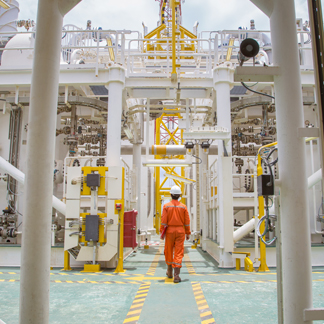
Difference Between Process Piping & Plumbing
When we refer to pipework and components with gases, water, chemicals, and other liquids passing through them, it’s generally plumbing that we refer to. In actuality, it’s a system strikingly similar in appearance yet different in functionality: process piping. Because process piping systems are an integral part of many industrial facilities, it’s important to know the difference between process piping and plumbing. Let’s dive into it.
The Low-down on Process Piping
In an industrial setting, process piping systems control the transmission and distribution of a vast array of fluids and gases. The vast interconnected systems are typically made up of a conglomeration of pipes, manual valves, control valves, flow control instruments, pressure control equipment, temperature control instruments, flanges, pipe supports, tubing, bolts, nuts, and gaskets. There are additional supplemental components that can help facilitate mixing, separating, pressurizing, or other functions.
Not all systems are built the same either. The complexity and intricacy of process piping systems are contingent on the application. Along with construction, process piping adheres to different state, federal, and international regulations.
Process piping systems are commonly found in many industrial settings, including:
- Oil and gas refineries
- Chemical processing
- Food and beverage
- Power plants
- Paper mills
- Aerospace manufacturing
- Wastewater treatment
In these and other industrial settings, process piping helps facilitate the following:
- Filtration
- Mixing or separation of liquids or gases
- Pressurization or depressurization of liquids or gases
- Regulation of fluid or gas flow
How Does It Differ From Plumbing?
Plumbing systems predominantly dismiss wastewater from the facility while bringing fresh water back in. The systems are also used in heating and cooling processes throughout the facility. On the other hand, the operational functions of a process piping system are geared towards distributing different chemicals and gases within a facility. Think of it like this; if a pipe network is
exclusive to water transmission, it’s a plumbing system. When the materials being moved
include other liquids and gases, you have a process piping system.
The two differ when it comes to building codes as they do not fall under. When installing a plumbing system—typically to water fixture networks—the pipes must adhere to specific plumbing codes. For process piping installations, the pipes are inspected and regulated by engineering code. Different codes for different modes…of operation.
At the End of the Day
If your facility requires a revamped piping system or you need help determining which pipe moves goes to what system, reach out to us. We can work with you to find a fitting solution.
